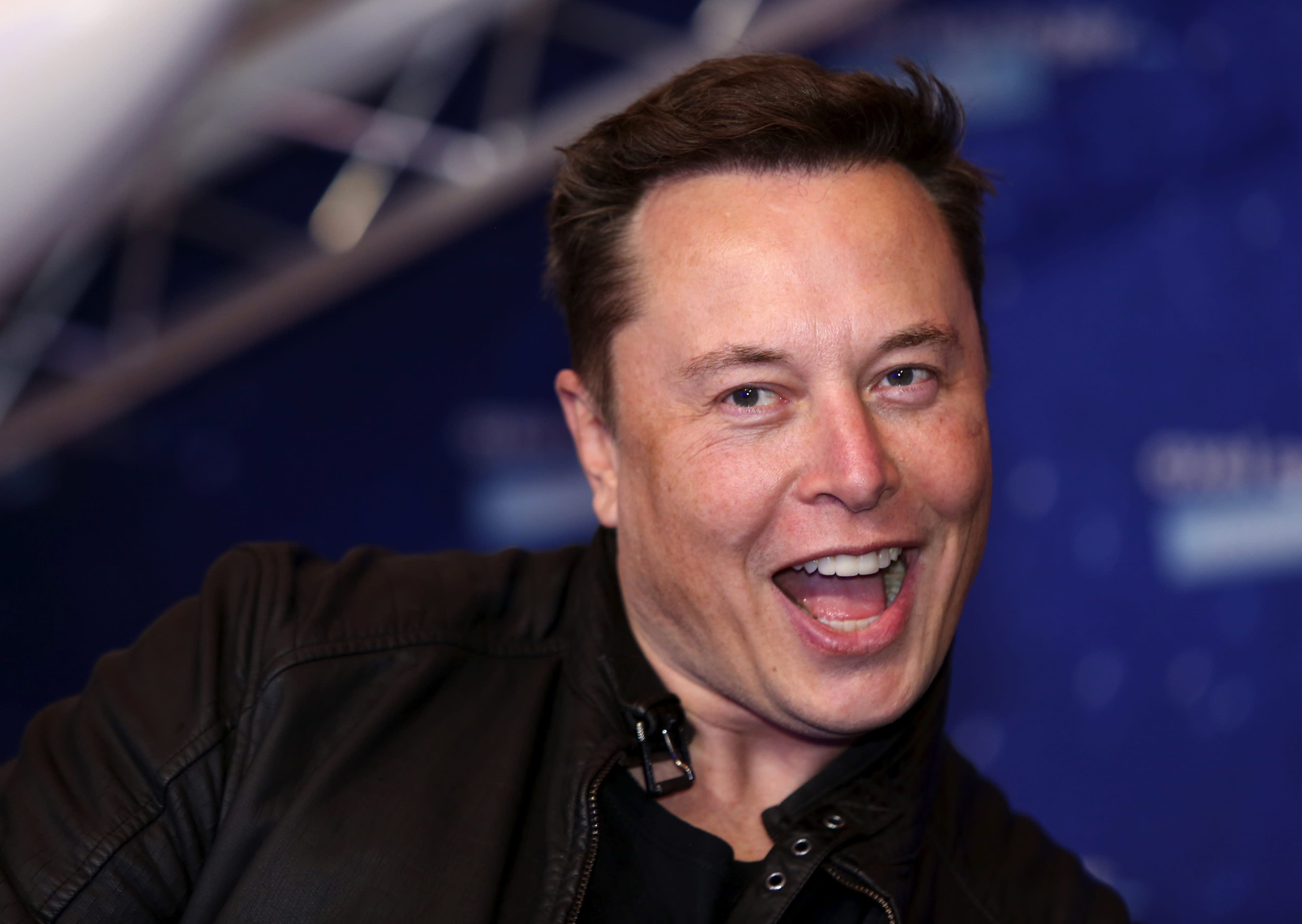Elon Musk explains how self-driving robotaxis will justify Tesla’s massive valuation

Elon Musk, founder of SpaceX and chief executive officer of Tesla Inc., arrives at the Axel Springer Award ceremony in Berlin, Germany, on Tuesday, Dec. 1, 2020.
Johannessen-Koppitz | Bloomberg | Getty Images
Don’t count Elon Musk among the investors who think Tesla is overvalued, even with the stock up almost 700% in the past year and the company valued at 213 times projected 2021 earnings, according to FactSet.
In the car maker’s fourth-quarter earnings call on Wednesday, Tesla’s CEO said there is a “roadmap to potentially justify” its market cap, which has topped $800 billion, making it the fifth-most valuable U.S. company. Musk is now the world’s wealthiest person, with a net worth over $200 billion.
Musk’s valuation math goes like this: Assume the company soon reaches $50 billion to $60 billion in annual car sales (the company generated $9.31 billion in automotive revenue in Q4 and said that vehicle deliveries would increase an average of 50% a year going forward). As Tesla’s self-driving technology continues to improve, those vehicles will become self-driving robotaxis, allowing usage to go from 12 hours a week to 60 hours a week. Tesla could charge additional fees for those robotaxis, allowing the company to generate much more revenue per car. Basically, it would be like bringing software economics to the manufacturing-intensive car business.
Musk also announced that Tesla’s Full Self Driving package will be available on a subscription basis starting in Q1, rather than as a one-time $10,000 add-on, which will allow Tesla to begin adding recurring revenue as it works on improving its self-driving technology.
Even if usage only doubles, a $1 trillion valuation can make sense, according to Musk.
“If you made $50 billion worth of cars, it would be like having $50 billion of incremental profit, basically because it’s just software,” Musk said in the introductory part of the call. Based on that formula, Musk says a multiple of 20 times earnings would lead to $1 trillion in market cap — “and the company’s still in high-growth mode.”
Less than nine months ago, Musk had a very different perspective on the company’s valuation. In a tweet on May 1, he said “Tesla stock price is too high,” a comment that sent the shares down 10%. Since then, the company’s market cap has jumped by more than 450%.
It’s possible that investors are already presuming Tesla’s cars will eventually turn into revenue-generating robotaxis. But the company isn’t close to having those capabilities yet, and Musk has a history of over-promising when it comes to technological innovation.
For instance, when Tesla began to discuss self-driving technology in 2016, Musk said the company would complete a hands-free trip across the U.S. by late 2017. The company has yet to complete that mission.
Currently, Tesla’s Full Self Driving features include Smart Summon, which lets a driver call their Tesla to roll out from a parking spot to where they are standing, and Navigate on Autopilot, which can pilot the car from a highway on-ramp to an off-ramp, making necessary lane changes along the way.
But despite its name, the Full Self Driving package still requires drivers to keep their hands on the steering wheel and remain attentive at all times. A Munich court ruled last year that Tesla misled consumers on the abilities of its automated driving systems, and banned the company from including “full potential for autonomous driving” and “Autopilot inclusive” in its advertising materials.
While Tesla has missed many of its own projections for self-driving technology, Musk continues to insist that it’s coming. “I really do not see any obstacles here,” he told an analyst on the call who asked about the company’s progress.
Tesla shares fell 5.5% in extended trading on Wednesday after the company reported earnings that missed analysts’ estimates, even as revenue was better than expected.
WATCH: Tesla misses on earnings
Nominations are open for the 2021 CNBC Disruptor 50, a list of private start-ups using breakthrough technology to become the next generation of great public companies. Submit by Friday, Feb. 12, at 3 pm EST.